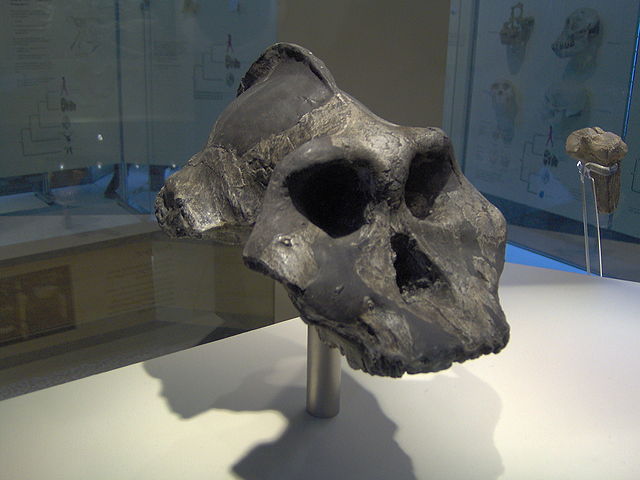Paranthropus aethiopicus is an extinct hominin species that lived between approximately 2.7 and 2.3 million years ago. Here are some unique characteristics and features associated with Paranthropus aethiopicus:
1. Geographic Location:
- Paranthropus aethiopicus fossils have been found in East Africa, specifically in the region of the East African Rift. Important sites include the Omo Valley in Ethiopia and the Turkana Basin in Kenya.

2. Cranial Morphology:
- Sagittal Crest: One of the distinctive features of Paranthropus aethiopicus is the presence of a prominent sagittal crest on the skull. This crest is a ridge of bone running along the top of the skull and is indicative of powerful jaw muscles. The sagittal crest serves as an attachment point for the temporalis muscles, suggesting strong chewing capabilities.
3. Dental Adaptations:
- Megadontia: Paranthropus aethiopicus exhibits megadontia, characterized by large molars and premolars. The size and robustness of their teeth suggest a specialized adaptation for processing tough and abrasive plant materials, possibly a diet dominated by coarse vegetation.
4. Facial Morphology:
- Prognathic Face: The face of Paranthropus aethiopicus is prognathic, meaning that it projects forward. This facial morphology, combined with the sagittal crest and large teeth, reflects adaptations for powerful biting and chewing.
5. Postcranial Skeleton:
- Robust Build: While much of the postcranial skeleton is not well-preserved, the morphology of the mandible and teeth, along with the presence of a sagittal crest, suggests a robust and muscular build. This physical adaptation likely contributed to their ability to process tough plant materials.
6. Tool Use:
- Limited Evidence: Compared to some other hominin species, there is limited evidence of tool use associated with Paranthropus aethiopicus. While they are generally considered part of the robust australopith group, they are not as strongly associated with stone tool production as some other hominins.
7. Evolutionary Significance:
- Adaptations for Vegetarian Diet: The megadontia and robust cranial features of Paranthropus aethiopicus suggest adaptations for a diet that included a substantial amount of tough plant material. This dietary specialization may have played a role in their ecological niche.
8. Coexistence with Other Hominins:
- Ecological Niches: Paranthropus aethiopicus coexisted with other hominins, such as early members of the genus Homo, in East Africa. The coexistence of different hominin species in the same geographic and temporal range raises questions about ecological niches and resource competition.
9. Timeline and Extinction:
- Short Temporal Range: Paranthropus aethiopicus has a relatively short temporal range, with fossils dating to around 2.7 to 2.3 million years ago. The reasons for their extinction and the factors contributing to the rise and fall of robust australopiths remain areas of investigation.
Paranthropus aethiopicus represents one of the unique branches in the hominin evolutionary tree, characterized by distinctive cranial and dental features adapted to a specific ecological niche. Ongoing research and discoveries contribute to our understanding of the diversity and adaptations within the hominin lineage.











